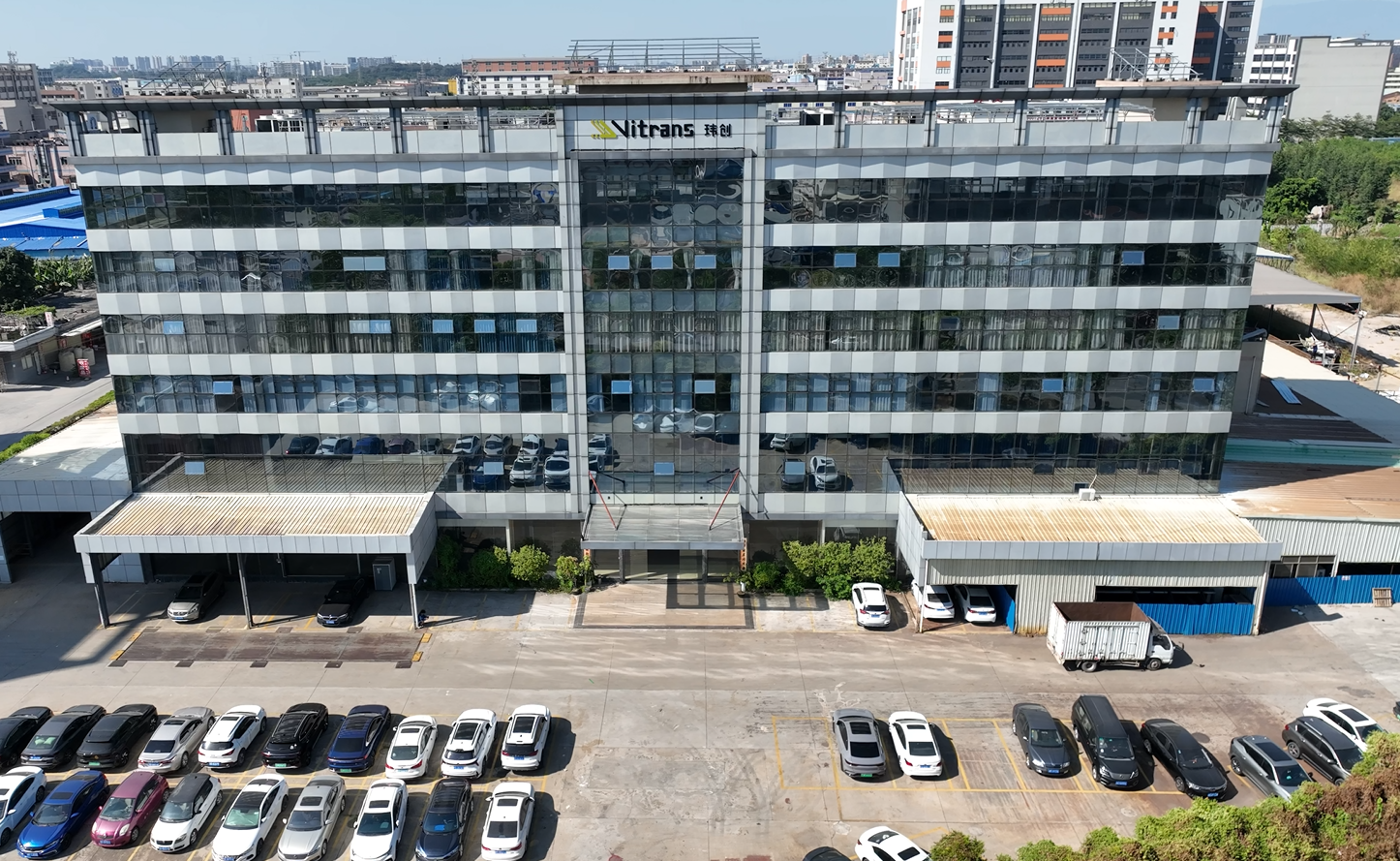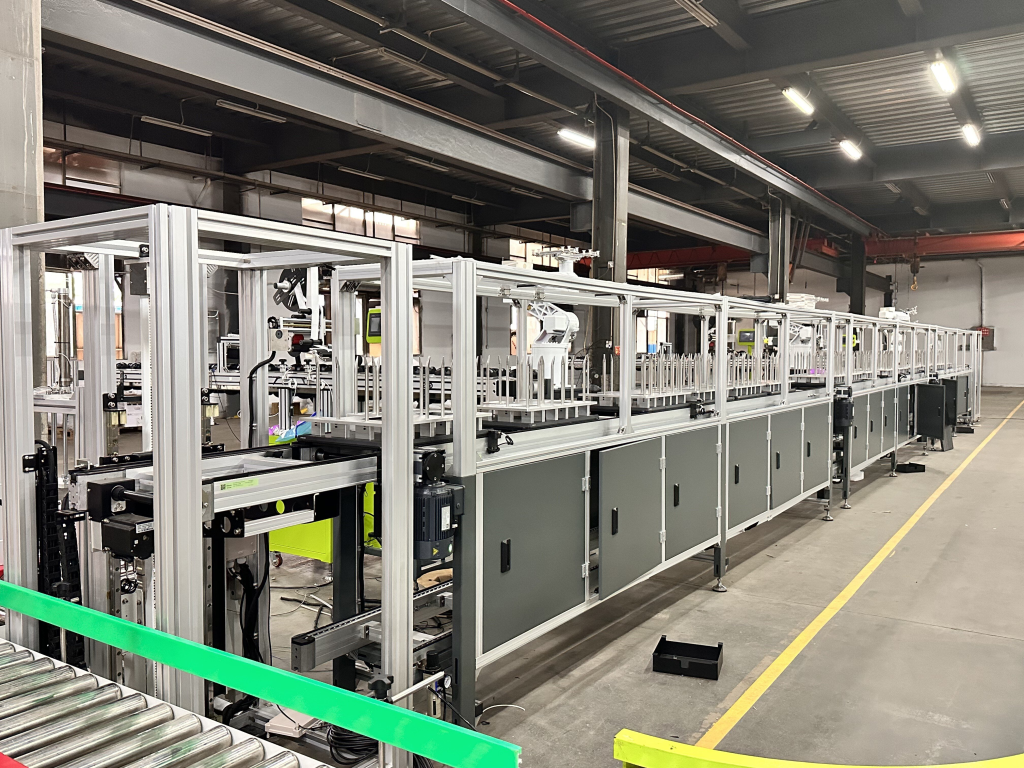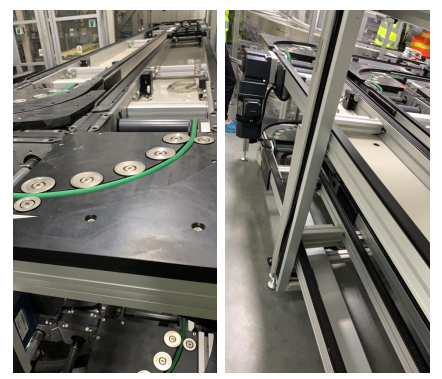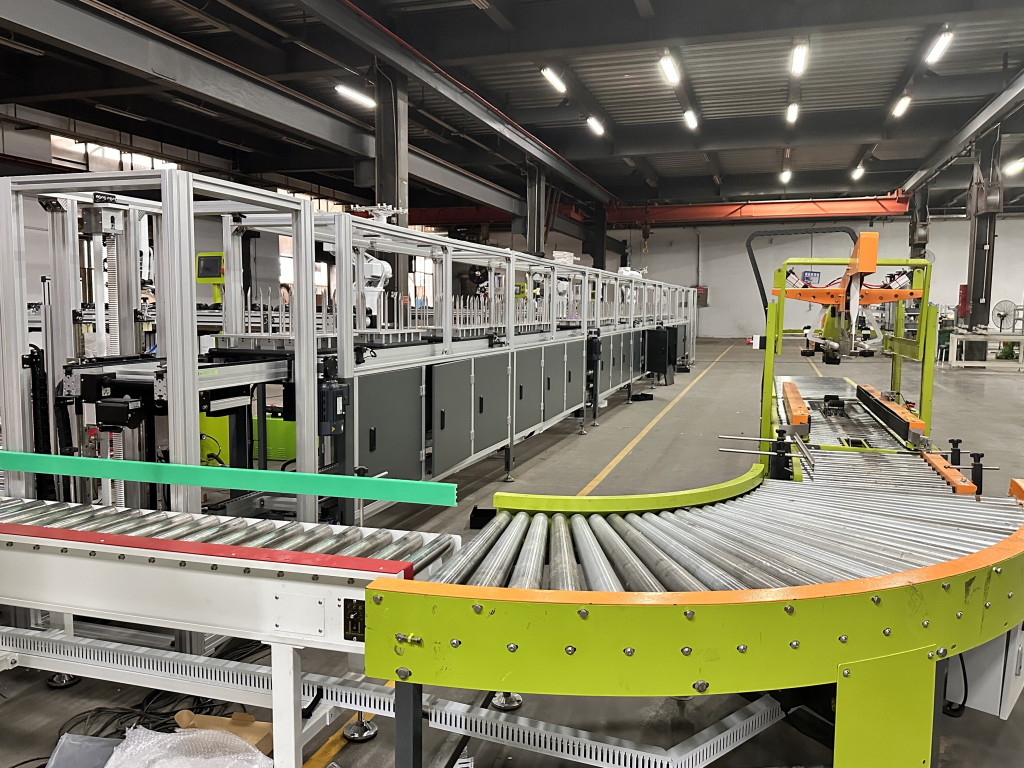Walk into any modern factory or logistics centre and you will almost always see a common piece of equipment - the roller line. This seemingly simple structure of the equipment, but is the core component of the material handling system, is quietly promoting the operation of modern industry. Why is the drum line so "popular" in industrial production? Look down to uncover its secrets:
I. Basic structure of roller lineWhat are the parts?
1.platen
- Power Roller : The internal motor, which can be driven independently, can easily convey heavier materials.
- Non-powered roller: driven by gravity or external force to rotate, suitable for light load, short distance transport, simple structure and low cost.
- Accumulation roller: With the function of accumulating materials, it can make the materials temporarily stored in a specific position and is often used in the process connection of the assembly line.
- Special material rollers: such as stainless steel rollers for corrosion resistance, plastic rollers for light weight, rubber-coated rollers for anti-slip performance.
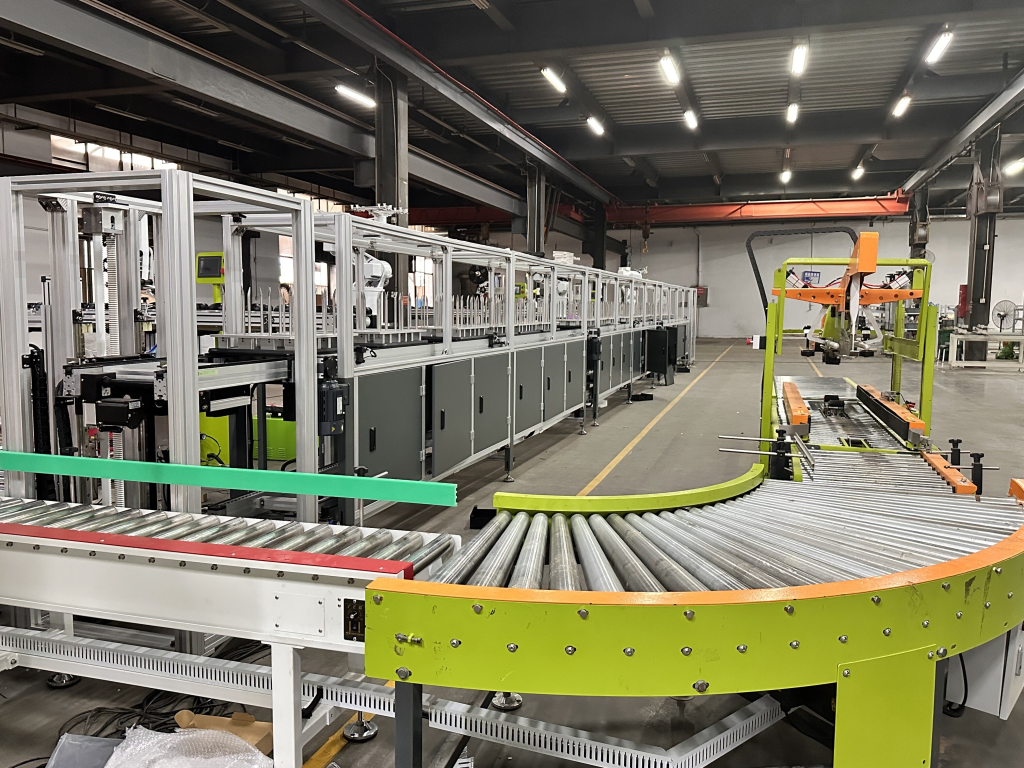
2.support framework
- Metal frame: made of steel or aluminium alloy, with strong bearing capacity and high stability, can support the roller and material weight for a long time.
- Adjustable frame: Height and level can be adjusted according to production needs, adapting to different production scenarios and material handling requirements.
- Combined frames: Multiple frame units can be flexibly combined to facilitate the extension or modification of the length and layout of the drum line.
3.drive system
- Drum motor: built-in motor drive, compact structure, high power transmission efficiency
- Chain drive: connecting several rollers by chain, it can transmit large power and is suitable for long-distance and heavy-duty conveying.
- Belt drive: the use of belt friction driven roller, running smoothly, relatively low noise, can be achieved at different speeds.
- Bevel gear transmission: used for power transmission at the bend, to ensure the smooth turning of materials when the drum is turning
4.Auxiliary components
- Guiding device: to lead the material to the specified direction, to prevent the material from deviating from the track.
- Stopper: Controls the stopping position of the material, ensuring that the material stops precisely at a specific position.
- Sensors: detect the position and flow of materials, real-time feedback information, automated control
- Protective device: to protect the safety of the operator, to avoid the material falling or drum clip injury and other accidents.
Second, the working principle of the roller line
The workflow of a roller line can be divided into three stages:
Firstly, the power transmission, the motor through the transmission system will power transfer to the driving drum; then friction transmission, the driving drum through the friction drive the carrier drum rotation; finally, the material conveying, the rotating drum and the bottom of the material friction, promote the material forward.
According to different conveying requirements, the roller line can flexibly realise straight line conveying, curved turning, lifting and adjusting, sorting and diverting and other operations.
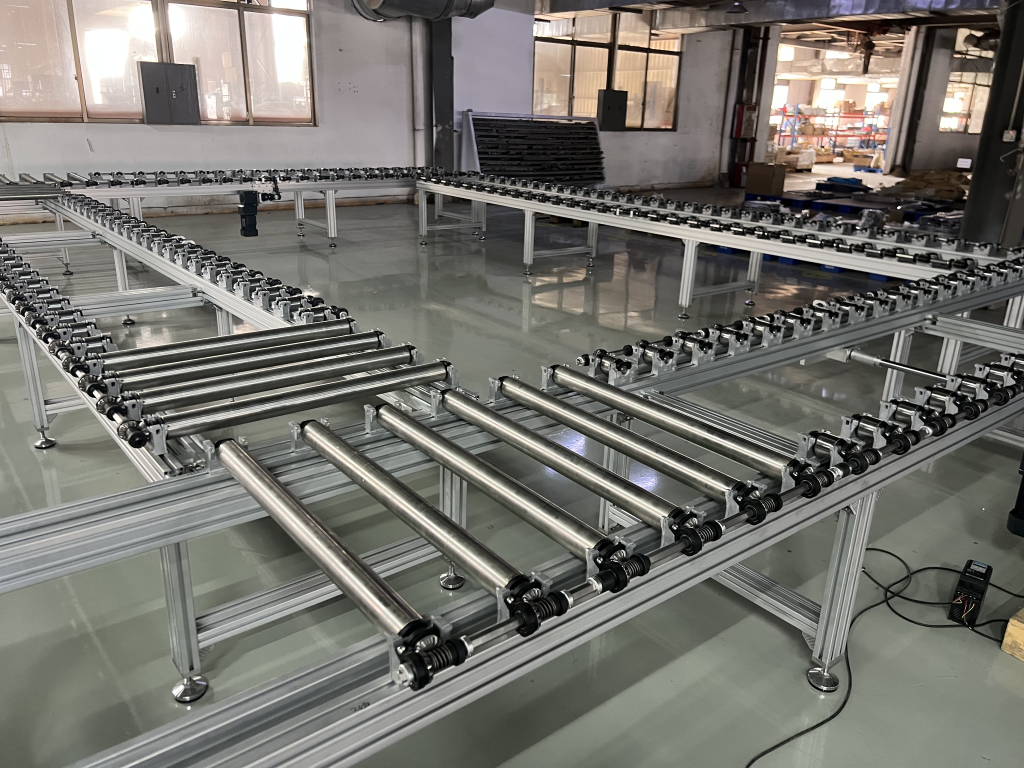
Third, the classification and application of roller line
1. Classification by drive mode
–Unpowered roller line: rely on gravity or manual push, suitable for light load, short distance conveying, such as small warehouses in the handling of lighter goods
-Powered roller line: motor-driven, can handle heavy-duty, long-distance conveying tasks, commonly used in automotive manufacturing to convey car body parts.
–Accumulation roller line: With material accumulation function, suitable for the assembly line process, can be in different processes between the temporary storage of materials, improve production efficiency.
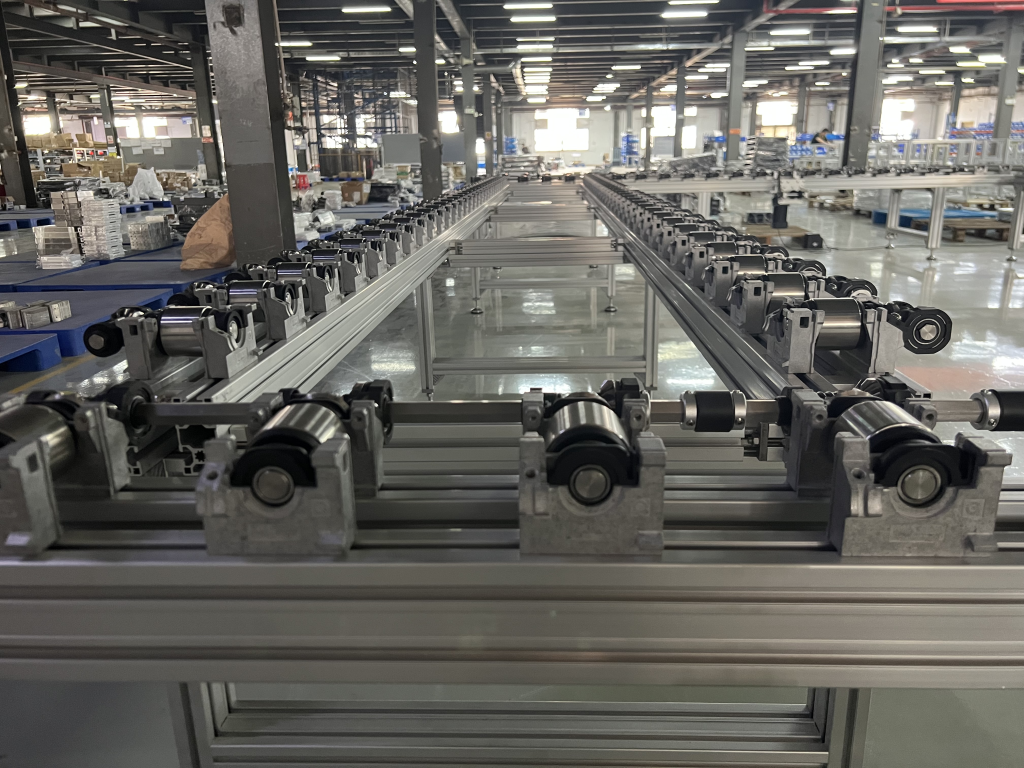
2. Classified by roller material
-Metalplaten: High load carrying capacity and durability, suitable for use in heavy industries such as machinery manufacturing
-Plastic roller line: light weight, low noise, suitable for food industry
Rubber-coated roller line: Increase friction, anti-slip and anti-damage, protect the surface of the product in the conveyance of electronic products.
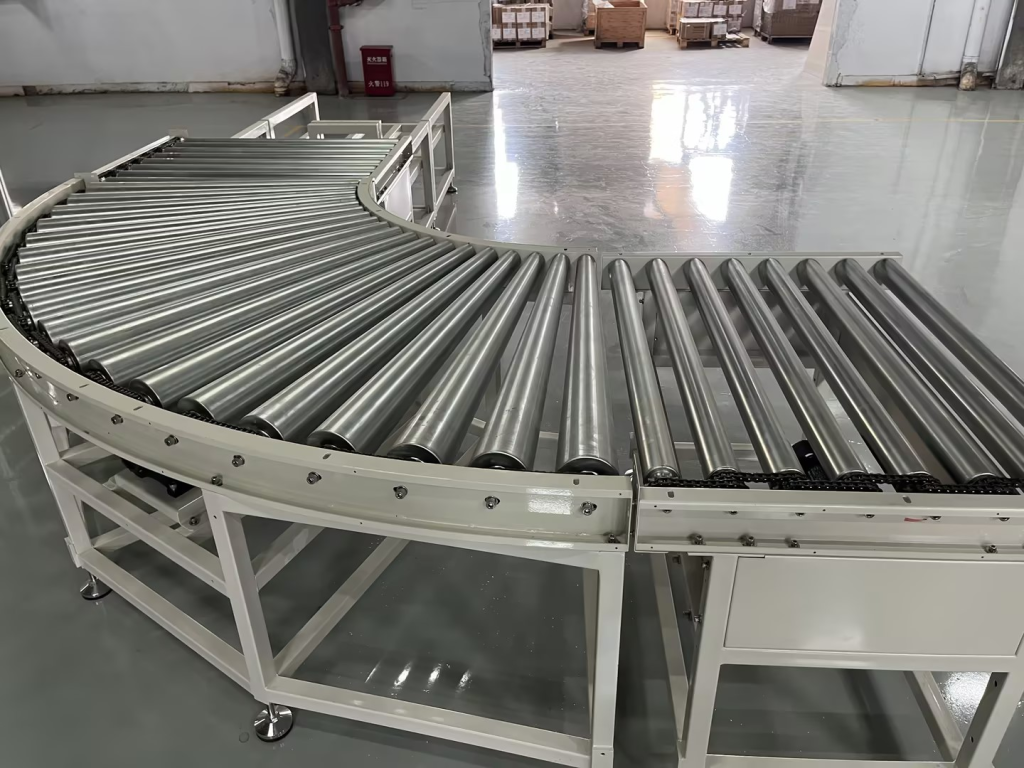
3. how (what extent)Industry Applicationstake
-Logistics warehousing: parcel sorting, pallet conveying
-Automotive manufacturing: bodywork delivery, parts assembly
-Food processing: packaging lines, filling lines
-Electronic products: PCBA board conveying, finished product packaging
Fourth, roller line design considerations
Multiple factors need to be considered if an efficient drum line is to be designed:
- Load requirements: maximum weight of a single piece of material
- Conveying speed: to meet the needs of the production beat
- Environmental conditions: temperature, humidity, corrosion, etc.
- Layout planning: path design for straight lines, curves, climbs, etc.
- Safety standards: comply with industry safety standards
- Ease of maintenance: easy for routine maintenance and troubleshooting
V. Future Development Trends of Roller Lines
With the advancement of Industry 4.0platenTechnology is moving towards intelligence:
1,Intelligent speed regulation:Automatic adjustment of conveying speed according to production demand, improving production flexibility.
2,Modular design:Quick combination to adapt to different production needs, easy to upgrade and modify the equipment
3,Energy efficient technologies:Reducing energy consumption, improving energy utilisation and meeting the requirements of environmental protection and sustainable development
From express parcels to car bodies, countless products have been "escorted" by roller lines. Seemingly simple roller line is actually an indispensable infrastructure in modern industrial production. In the future, with the continuous progress of technology, the roller line will continue to evolve to provide more efficient and intelligent material handling solutions for various industries.
Do you use roller lines in your industry? Feel free to share your experiences and insights on their use in the comments section.
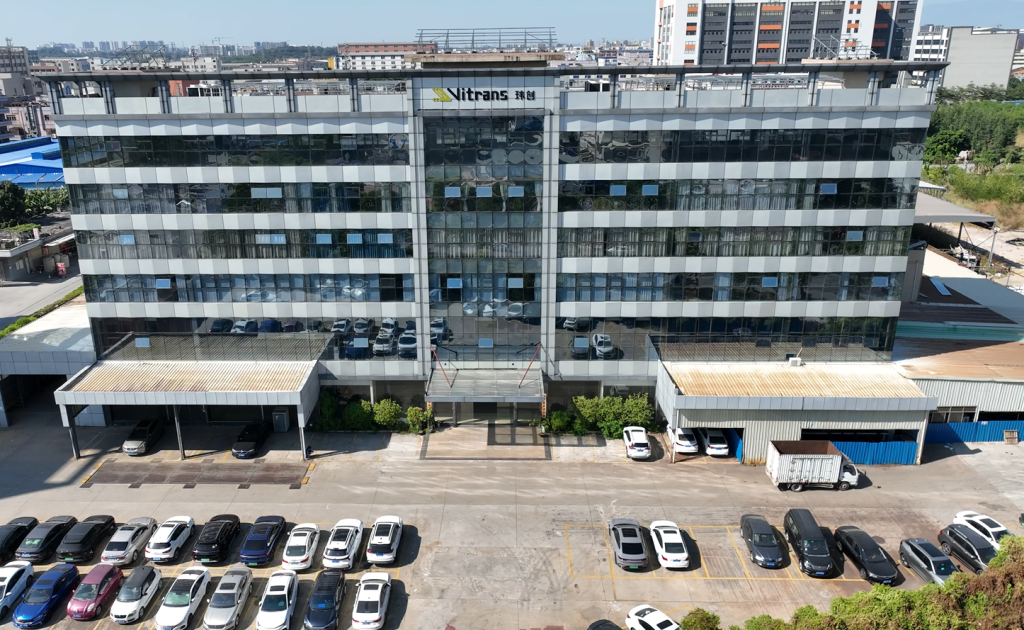
Weitron offers customers a range of product types regarding pallet conveying, including:Roller lines, doubling chain lines, belt linesetc., as well as solutions and exclusive services tailored to the various needs of our customers.
Reasons for choosing Wei Chuang:
- Wide range of popular products with some stock reserves
- Competitive prices and delivery times
- decadeExtensive experience in providing customised solutions
- Consistent quality, already with a number ofrenownedManufacturer Cooperation

